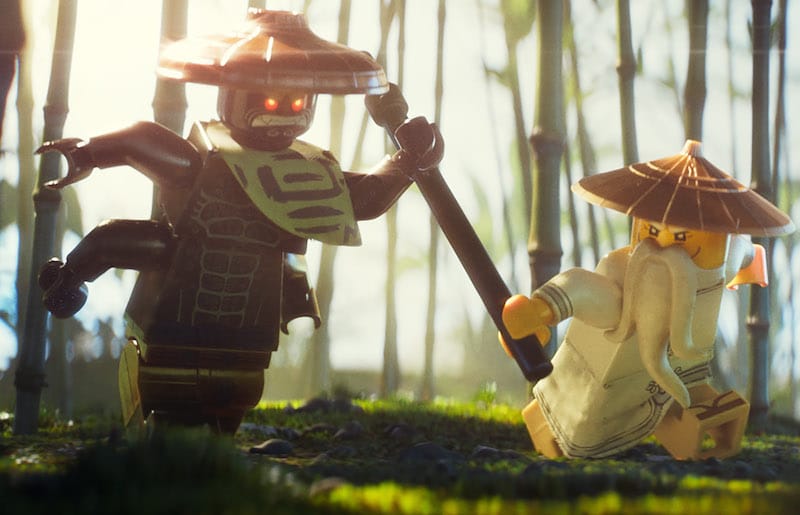
Jackie Chan is such an amazing martial artist, that it would be tough for any artist to recreate his moves.
When Chan provides a voice for an animated movie, he’s full service. Chan not only plays Master Wu in The LEGO Ninjago Movie, but he also choreographed all the fights.
That’s right, LEGO Kung Fu fights were choreographed by Jackie Chan and his stunt team provided the reference for LEGO Ninjago’s animation.
“It started out as Jackie signed on to do the voice in the movie,” producer Dan Lin told Monsters and Critics in a one-on-one interview. “Then we met with him and talked about how he could consult on the action of the movie. At that time, we thought he’d be watching animated shots and tell us how to frame it.”

In person, Chan is naturally animated himself. When Lin and other producers saw Chan demonstrating moves, they had an idea.
“He’d get up and start doing the moves,” Lin continued. “We looked at each other and said, ‘Why don’t we just actually shoot it?’
“It became the easier way to do it. He and his JC Stunt Team would do the actual martial arts moves and then we’d have animators on set who’d watch them and then draw according to those actual moves.”
It wasn’t quite such an easy sell to Chan. LEGO Ninjago director Charlie Bean created a LEGO animated sequence based on the warehouse fight from Rumble in the Bronx to convince Chan it could work.
“It wasn’t that he wasn’t interested,” Bean said. “He just didn’t think we could do it. He didn’t see how it could be done because of the limitations of the LEGO.
“I did a test early on with my animation director and we showed him how we could do it, the technique that we developed and how we used bricks to simulate that kind of motion and the kind of choreography.”

Once Chan saw his own work reflected back to him in LEGO animation, he got it.
“We did a fight test based on Rumble in the Bronx and he was like, ‘Oh, okay. I see what you can do,’” Bean said. “The approach was don’t think about bricks. Don’t think about mini-fig[ure]s. Just choreograph it in the same way that you choreograph anything else and leave the interpretation up to the animation team.”
Since Chan can bend even more than regular humans do (remember when he slid through the casino cash slot in Rush Hour 2?), it might be hard to imagine LEGO figures having the same mobility. Bean revealed some subtle tricks you won’t even notice when you watch The LEGO Ninjago Movie.
“We use what we call loosely ‘brick tooling’ where we’ll use different pieces that have different shapes to simulate movement,” Bean said. “We’ll dislocate the bricks away from camera so you don’t see that the arm’s actually dislocated and it’s further away from camera.
“It’s a lot of film tricks, a lot of stop motion tricks but we always maintain the bricks as they are. We never bend any of the bricks. We keep them solid.”

When the action is really fast, the mini-figures aren’t actually moving faster. The animators are just substituting different shapes.
“There’s a dragon’s claw that we use as a swipe that’s got a nice arc to it, or sausages,” Bean said. “There’s sausages everywhere in the film. You see them everywhere if you stop-frame through.”
Producer Chris McKay, who directed The LEGO Batman Movie, said there’s no problem for which LEGO animators cannot find a creative solution.
“There’s always a yes,” McKay said. “There’s never a no. We always try to figure something out and try to make it work, try to figure out what’s going to feel like it. At the end of the day, that’s what we’re trying to do, even with an emotional scene.
“It’s like he can’t bend down and do the thinker pose and feel like this, but we can imitate something that’s close to it and get the idea across in a sort of silly way.
“Sometimes those solutions actually make some of the best comedy, because you’re representing an idea in an absurd way. That’s what’s fun about the process.”
The LEGO Ninjago Movie opens this Friday, September 22.